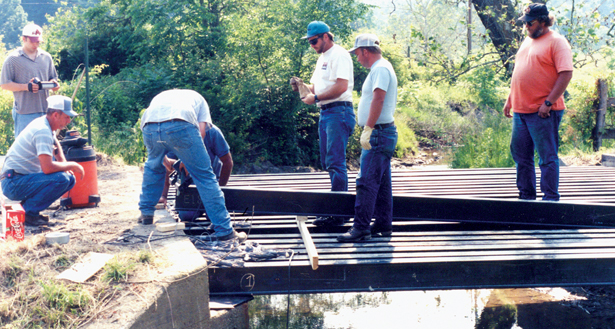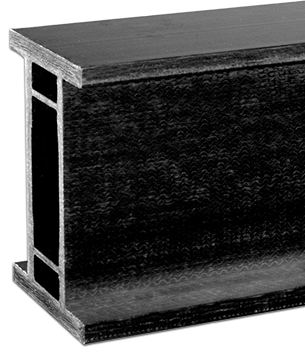Case Study: Tom’s Creek Bridge Reopens with Composite Beams

 Tom’s Creek Bridge, Blacksburg, VA reopened to traffic June 23, 1997 as one of the first composite short-span vehicular bridges in the U.S. After replacing the corroded steel beams supporting the bridge with composite beams, the 17½ x 22 ft-wide bridge was upgraded from 10-ton to 20-ton capacity. More than 1,000 cars per day cross the bridge. Designing the replacement bridge was a joint venture of Virginia Tech University, the Virginia Department of Transportation and the Virginia Transportation Research Council.
Tom’s Creek Bridge, Blacksburg, VA reopened to traffic June 23, 1997 as one of the first composite short-span vehicular bridges in the U.S. After replacing the corroded steel beams supporting the bridge with composite beams, the 17½ x 22 ft-wide bridge was upgraded from 10-ton to 20-ton capacity. More than 1,000 cars per day cross the bridge. Designing the replacement bridge was a joint venture of Virginia Tech University, the Virginia Department of Transportation and the Virginia Transportation Research Council.
The new 8"x6" composite beam,developed for the government sponsored Advanced Technology Program, is pultruded from a composite matrix of carbon/e-glass reinforced vinyl ester resin. The new beam design significantly improves the flexural modulus and torsional bending over the present fiberglass I-beam. The flexural modulus of the composite beam, 6300-6500 ksi, is more than twice the flexural modulus of a standard fiber glass I-beam and the rotational bending is less than 1/2° versus the normal 3-4°.
“One of the primary reasons you want to use a composite material is the durability.The problems with traditional materials is the amount of maintenance they require,” says John J. Lesko, one of the composite beam designers for the project and an associate professor at Virginia Tech, Blacksburg, VA. “This bridge will provide a wealth of knowledge.”
| TECHNICAL DATA |
|---|
| Product: Composite Double Webbed I-Beam |
| Process: Pultrusion |
| Materials: Composite matrix of carbon/e-glass reinforced vinyl ester resin |
| Sizes: 8" x 6" x 3/8" - 1/16" web thickness x 5/8" flange |
| For: Tom's Creek Bridge, Blacksburg, VA |
The entire bridge rehabilitation, including asphalting the decking, was completed in five days. The decreased installation and maintenance costs are expected to be among the major benefits of using composite structural shapes in infrastructure rebuilding. “Two people on scaffolding can handle a beam with their hands, versus having to use a light crane or a backhoe to lift it in place,” says Julius Volgi, a VDOT engineer and former composite specialist at the Federal Highway Administration’s Turner Fairbank Research Facility.